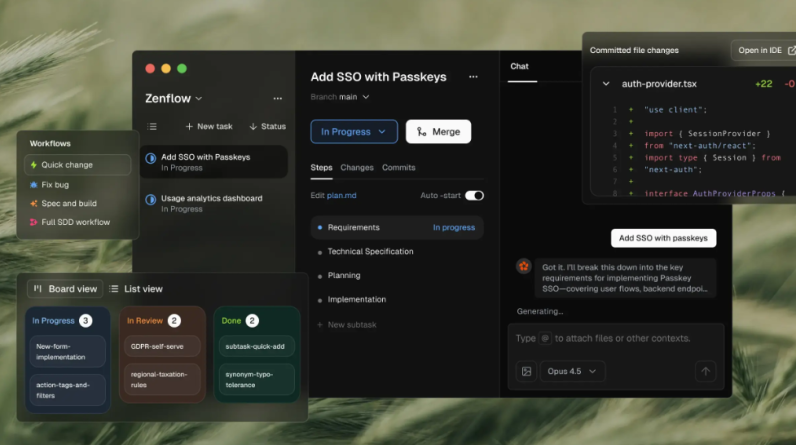
Streamlining email workflows using AI agents powered by large language models (LLMs) offers a practical solution to managing repetitive tasks. By integrating APIs, structured data, and confidence scoring, you can design a system that autonomously retrieves, analyzes, and responds to emails. Love them or hate them, they’re an unavoidable part of modern life. Whether it’s sponsorship inquiries, meeting requests, or the endless stream of newsletters you forgot you subscribed to, your inbox can quickly become a source of stress and wasted time.
If you’ve ever wished for a way to magically sort, respond to, and manage your emails without lifting a finger. The good news is with advancements in AI, that wish isn’t as far-fetched as it might seem. Imagine having a virtual assistant that not only understands the intent behind your emails but also responds to them intelligently, freeing you up to focus on what really matters. This guide by All About AI explores the practical steps of building AI agents using large language models (LLMs) to automate your email workflow.
From fetching and analyzing emails to crafting thoughtful responses, these AI systems are designed to take the repetitive, time-consuming tasks off your plate. Whether you’re overwhelmed by sponsorship requests or simply looking to streamline your inbox, this guide offers a customizable, scalable solution to help you regain control of your time.
Start Automating Your Email Workflow
TL;DR Key Takeaways :
- AI-driven email automation uses LLMs, APIs, and structured data to streamline workflows by autonomously retrieving, analyzing, and responding to emails.
- Key LLM capabilities for email automation include instruction-following, reasoning, and structured data handling to ensure accurate and efficient processing.
- The workflow involves fetching emails via APIs, structuring data, analyzing content, and using confidence scoring to prioritize actions.
- Customizable features like tailored prompts, adjustable confidence thresholds, and tool integration allow the system to adapt and scale with business needs.
- Real-world applications include managing sponsorship inquiries, automating routine tasks, and preventing duplicate responses, with opportunities for future enhancements like advanced tool integration and local model optimization.
Key Capabilities of LLMs for Email Automation
To develop an effective AI agent for email automation, the underlying LLM must possess specific capabilities. These ensure the system can interpret emails accurately and integrate seamlessly into your workflow:
- Instruction-Following: The AI must interpret and execute detailed prompts to process emails effectively, making sure tasks are completed as intended.
- Reasoning: It should analyze email content to identify intent, such as distinguishing between customer complaints, partnership inquiries, or internal updates.
- Structured Data Handling: The ability to process and output data in formats like JSON is essential for compatibility with other tools and systems.
These features form the foundation of a reliable and efficient email automation system, allowing it to handle complex workflows with precision.
How the Workflow Operates
An AI-driven email automation system follows a structured workflow designed to maximize efficiency and accuracy. Below is an overview of the key steps involved:
- Fetching Emails: APIs such as Google Gmail API or Microsoft Graph API are used to retrieve emails from your inbox, making sure seamless integration with your email platform.
- Data Structuring: The fetched emails are organized into structured formats, such as JSON, to assist easier processing and analysis.
- Email Analysis: LLMs analyze the structured data to extract essential details, including sender information, subject lines, and the intent of the email.
- Confidence Scoring: Confidence scores are assigned to determine whether an email should be processed further or flagged for manual review.
This systematic approach ensures the system can handle large volumes of emails while maintaining accuracy and reducing the risk of errors.
Enhance your knowledge on Large Language Models (LLMs) by exploring a selection of articles and guides on the subject.
Steps for Processing Emails
Once emails are analyzed, the system can execute targeted actions based on their content and intent. The following steps outline how this process unfolds:
- Email Categorization: Emails are grouped into categories such as customer inquiries, sponsorship requests, or internal communications to streamline processing.
- Detail Extraction: Critical information, such as deadlines, budgets, or sender details, is extracted to guide appropriate responses.
- Automated Responses: APIs like Mailgun are used to send pre-defined email templates tailored to each category, making sure timely and relevant communication.
By automating these steps, you can significantly reduce manual effort, allowing you to focus on higher-priority tasks and strategic initiatives.
Customizing and Scaling the System
One of the most valuable aspects of AI-driven email automation is its adaptability. The system can be customized to meet your specific needs and scaled as your requirements evolve:
- Tailored Prompts: Prompts can be customized to align with your unique email processing workflows, making sure the system operates according to your preferences.
- Adjustable Confidence Thresholds: Confidence scoring thresholds can be fine-tuned to improve accuracy and minimize errors, adapting to the complexity of your emails.
- Tool Integration: Additional tools, such as CRM systems or task management platforms, can be integrated to expand the system’s functionality and enhance its utility.
These customization options ensure the system remains relevant and effective, even as your business grows or your workflow requirements change.
Choosing the Right LLM
Selecting the appropriate LLM is a critical decision that impacts the system’s performance, cost, and data security. Below are the two primary options to consider:
- Cloud-Based Models: Models like OpenAI’s GPT offer high performance and ease of use, making them ideal for businesses seeking quick deployment. However, they may raise concerns about data privacy and security.
- Local Models: Running models locally provides greater control over data security, making them a suitable choice for workflows involving sensitive or confidential information.
Your choice should align with your operational priorities, balancing performance needs with privacy and security considerations.
Real-World Applications
AI agents for email automation have diverse applications across various industries, showcasing their versatility and value. Here are some practical use cases:
- Sponsorship Inquiry Management: Automatically process and respond to sponsorship requests, providing relevant details and saving time.
- Routine Task Automation: Handle repetitive tasks such as confirming appointments, sending reminders, or answering frequently asked questions.
- Duplicate Response Prevention: Log responses to avoid sending multiple replies to the same email, making sure consistent communication.
These examples highlight how AI-driven email automation can save time, improve efficiency, and enhance overall productivity.
Opportunities for Future Enhancements
As AI technology continues to evolve, there are numerous opportunities to enhance your email automation system further. Consider the following possibilities:
- Advanced Tool Integration: Incorporate tools for more complex workflows, such as scheduling meetings, generating reports, or managing project timelines.
- Local Model Optimization: Experiment with local LLMs to improve privacy, reduce dependency on external providers, and gain greater control over sensitive data.
- Use Case Refinement: Continuously refine the system to address specific challenges or requirements unique to your workflow, making sure maximum relevance and effectiveness.
By proactively exploring these enhancements, you can ensure your system remains innovative and aligned with your evolving needs.
Media Credit: All About AI
Filed Under: AI, Guides
Latest Geeky Gadgets Deals
If you buy something through one of these links, Geeky Gadgets may earn an affiliate commission. Learn about our Disclosure Policy.
Originally Appeared Here






